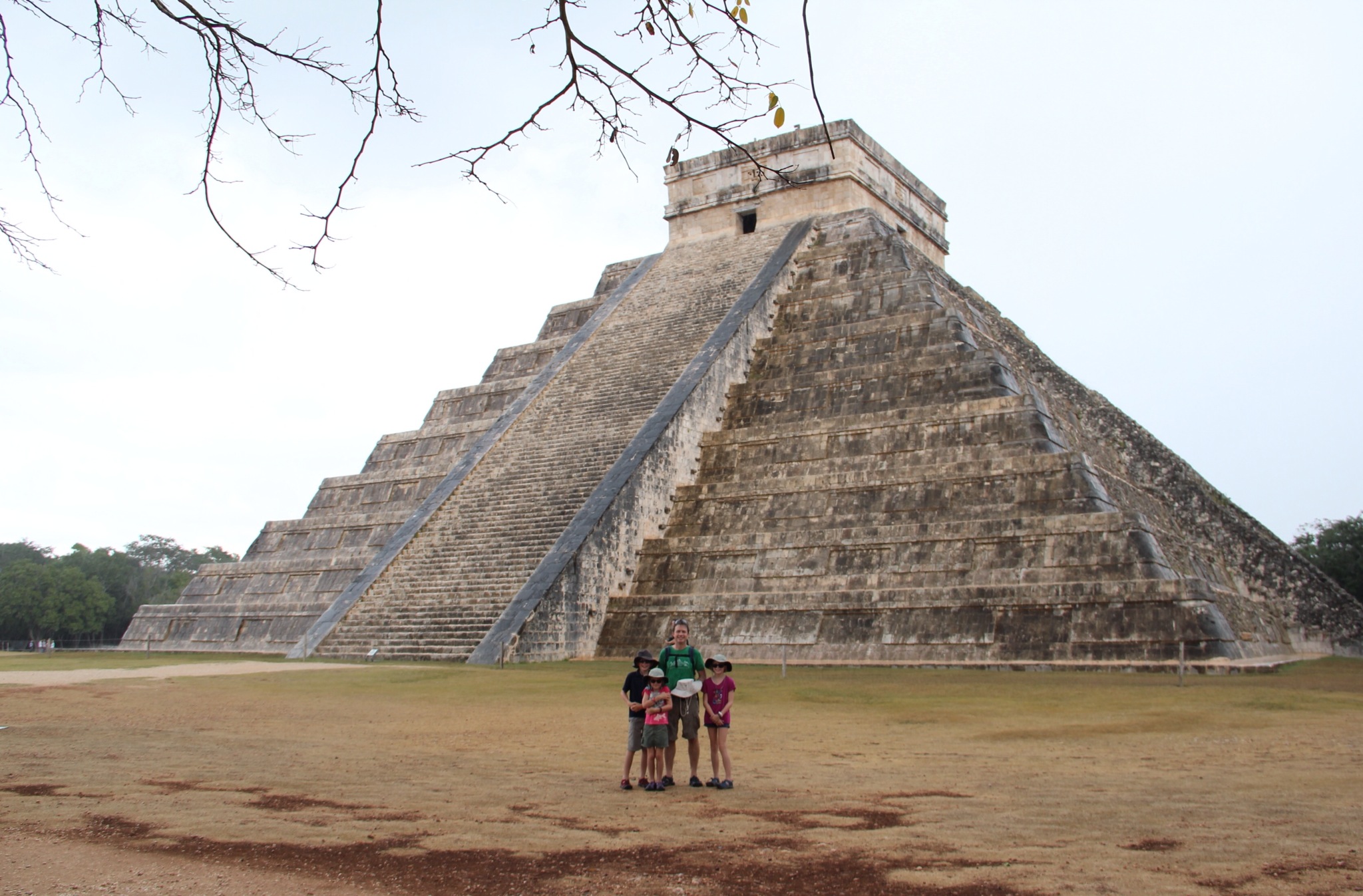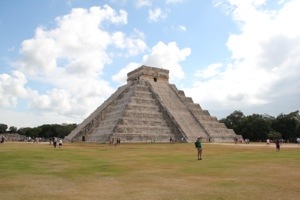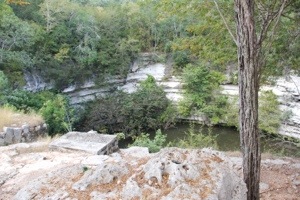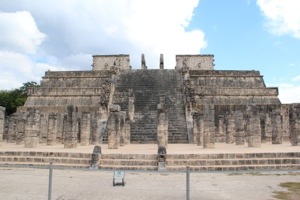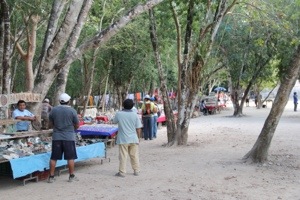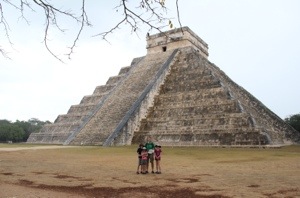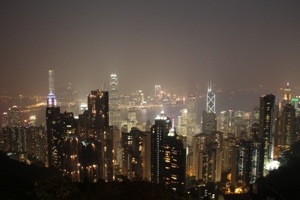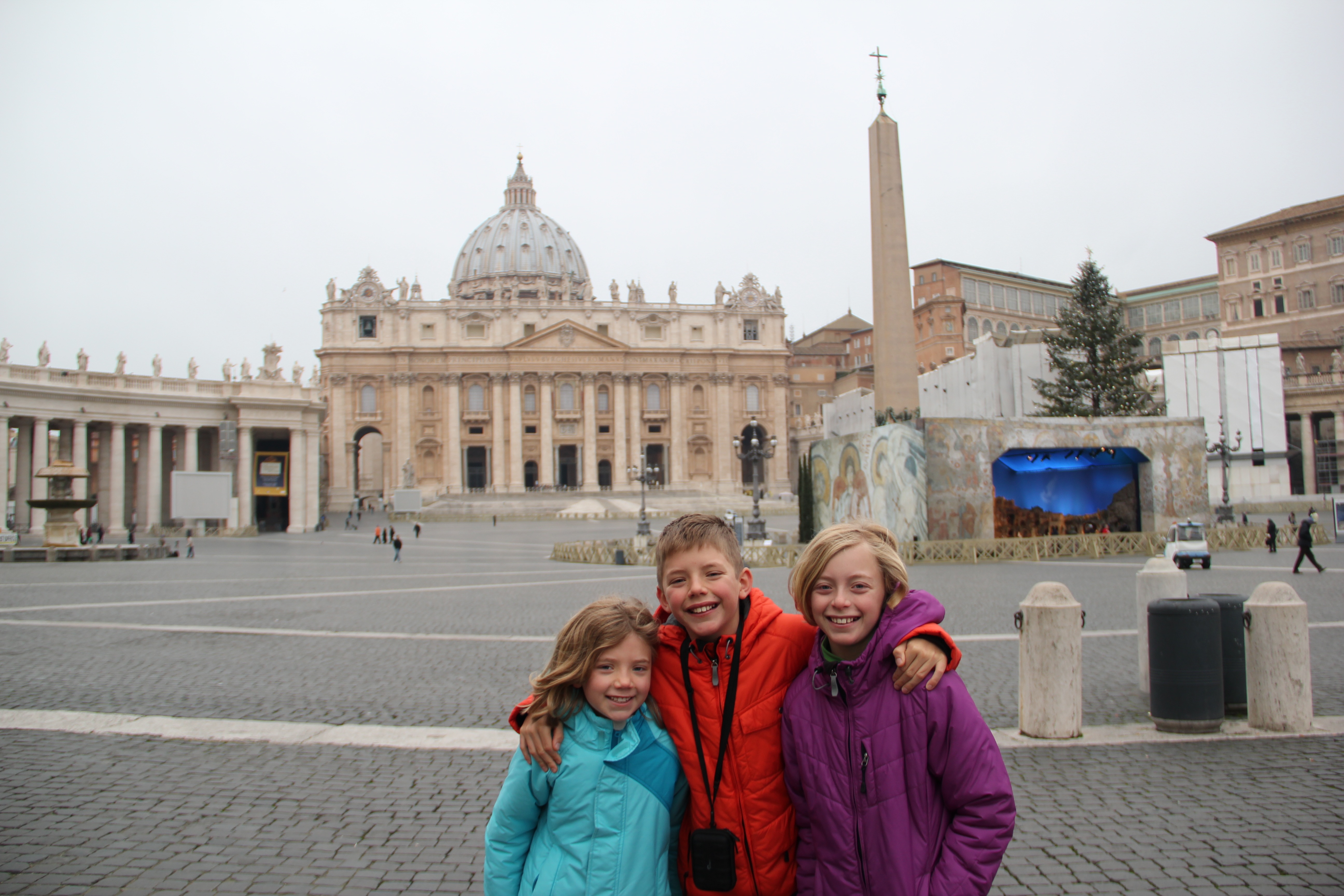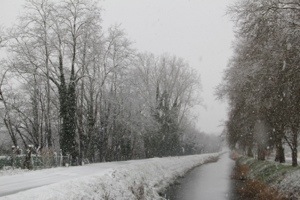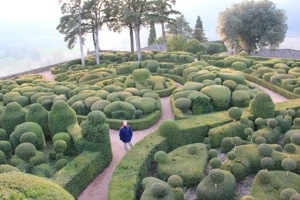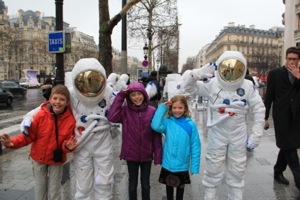Chichen Itza was one of the largest Maya cities, with the relatively densely clustered architecture of the site core covering an area of over 5 square kilometres. It is considered to have been one of the mythical great cities in Mayan culture.
Dominating the North Platform of Chichen Itza is the Temple of Kukulkan, usually referred to as El Castillo (“the castle”). This step pyramid stands about 30 metres high, and is very impressive.
On the Spring and Autumn equinoxes, in the late afternoon, the northwest corner of the pyramid casts a series of triangular shadows that creates the appearance of a serpent wriggling down the staircase.
Chichen Itza is located in the eastern portion of Yucatán state in Mexico. The northern Yucatán Peninsula is arid, and the rivers in the interior all run underground. There are two large, natural sink holes, called cenotes, that could have provided plentiful water year round at Chichen, making it attractive for settlement. Of the two cenotes, the “Cenote Sagrado” or Sacred Cenote (also variously known as the Sacred Well or Well of Sacrifice), is the most famous.
The Cenote Sagrado was a place of pilgrimage for ancient Maya people who would conduct sacrifices during times of drought. Archaeological investigations support this as thousands of objects have been removed from the bottom of the cenote, including material such as gold, carved jade, copal, pottery, flint, obsidian, shell, wood, rubber, cloth, as well as skeletons of children and men.
Great Ball Court about 150 metres from the Castillo is impressive. It is the largest and best preserved ball court in ancient Mesoamerica. It measures 168 by 70 metres. The parallel platforms flanking the main playing area are each 95 metres long. The walls of these platforms stand 8 metres high; set high up in the centre of each of these walls are rings carved with intertwined feathered serpents.
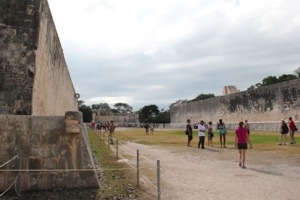
At the base of the high interior walls are slanted benches with sculpted panels of teams of ball players. In one panel, one of the players has been decapitated; the wound emits streams of blood in the form of wriggling snakes.
The Temple of the Warriors complex consists of a large stepped pyramid fronted and flanked by rows of carved columns depicting warriors.
While the Mayan ruins are impressive, what detracts from the site is the stalls/touts all over it, outside the entrance, along the walk in, down every path, around nearly every piece of stonework and the cenotes – it destroys the feel of the place, or rather creates a somewhat different feel…..
It was hot and stormy on this day, and just as we were heading back to the car, the heavens opened and a tropical shower descended. The great thing about the rain was it sent the touts running for cover, and the many tourists to the trees, so we could get some clear pictures of the buildings!
Chechen Itzá is one of the most visited Mayan Ruins with over 1.5 million visiting each year – it is no wonder why you are no longer allowed to climb up or over any of them.

